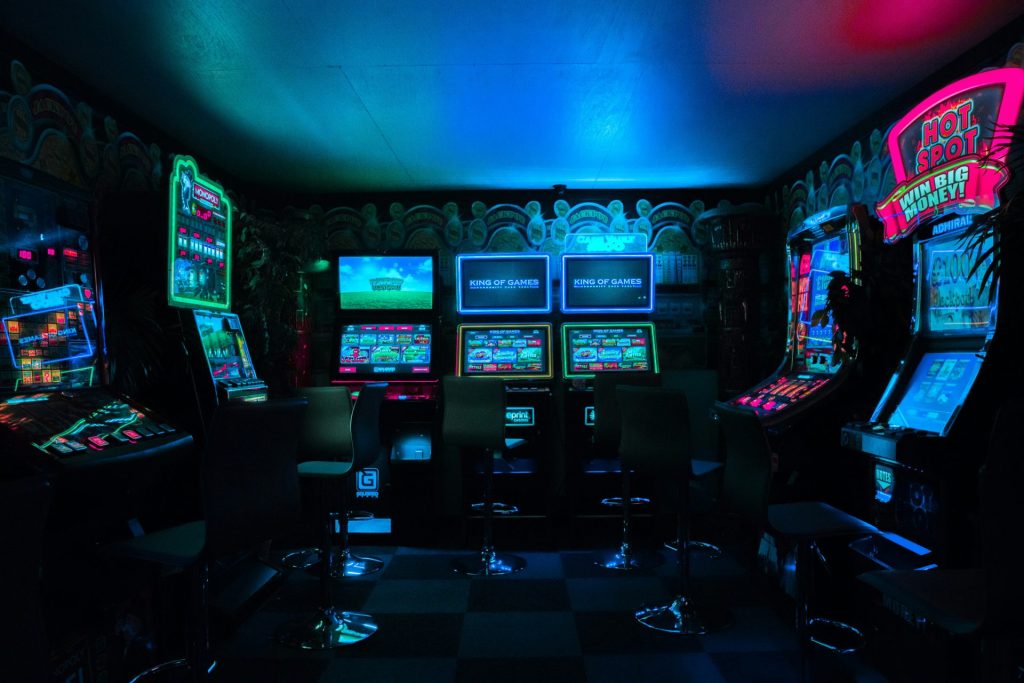The continuous development of AI image generation has provided the video gaming industry a chance to unlock exciting new possibilities.
Artificial intelligence now can swiftly and automatically generate intricate graphics and artistic assets, a task that once demanded extensive manual labour from teams of artists over months.
This technological leap enables video games with practically limitless replay ability, as environments, landscapes, and virtual worlds are uniquely constructed with intricate detail during each new playthrough.
The breakthrough fuelling this paradigm shift is a machine learning technique called generative adversarial networks (GANs) which you can read about more at TechTarget.
One network creates randomized images, while the other judges them against the intended target – learning to enhance things like cohesion, resolution, and realism in each cycle.
The most sophisticated GAN models today can produce photorealistic visuals that are nearly indistinguishable from photographs.

Leading video game studios are investing heavily in generative adversarial network (GAN) technology in hopes of transforming the game development process.
GANs open up the possibility of generating nearly photorealistic in-game assets – environments, objects, characters, textures, and more – procedurally during runtime rather than relying on pre-built art assets.
The open-world survival game “Islands of Nyne” from Definition Games has made headlines for its pioneering use of GAN-powered world generation.
At launch, the game dynamically assembles a unique Pacific archipelago comprised of dozens of explorable islands.
The game engine uses AI to sculpt coastlines, and populate island interiors with forests, mountains, caves, and other geological features, all rendered in remarkably lifelike detail in real time.
Players begin their adventure by washing up on an initially empty island with a blank map.
But as they begin venturing out and exploring, the virtual world steadily comes to life around them.
Abandoned villages, native flora and fauna, resources to scavenge, and more are randomly spawned, encouraging players to fully map out their surroundings.
No two playthroughs will ever feature the same distribution of content across the procedurally-generated islands.
The variably sized landmasses each feature their distinct layout, biomes, and points of interest.
Trekking across a jungle island may reveal an ancient temple ruin decorated with intricate statues and artwork synthetically crafted by AI.
Other islands could contain anything from deep subterranean cavern systems to snow-capped mountain ranges, coastlines dotted with hidden sea caves, and more.
Environmental generation is seamlessly woven into gameplay, providing players a strong motivation to explore as the miniature open world assembles itself based on their journeys across each island chain.
The result is an incredibly immersive virtual setting with a near-infinite scope that feels organic and hand-crafted rather than randomly strewn together, one example of this is the horror title “Undergrowth”.
It uses generative AI to craft eerie, labyrinthine levels underground.
It’s caverns and cramped tunnels continuously shift upon re-entry, keeping players lost amidst an ever-changing claustrophobic maze. Winding passageways loop and branch into newly minted chambers and even entire sections can abruptly close off or open up. The game’s terrifying monsters also exhibit diverse behaviors programmed by AI, hunting players relentlessly with unique traits each run.
Some virtual reality experiences are integrating procedural generation as well. The blockchain-based casinos featured on Vegasslotsonline UK are exploring AI-conjured thematic environments, dealer avatars, and ambient backdrops for its VR slots, blackjack, and poker offerings. While the approach is still experimental, it aims to add visual dynamism and immersive flair unavailable with pre-rendered art assets. You may explore various games and free demo versions from casinos recommended on the site.

Multiplayer games are also ripe for AI world-building.
Massively multiplayer titles could populate otherwise empty galaxies or planets with complex procedural simulations.
Each player may have a private instance of a location filled with reactive AI inhabitants that carry out distinct needs, routines, and relationships.
Large-scale events like wars or migrations could then ripple out organically based on evolving environmental and factional dynamics.
Looking forward, a future where entire AAA games are generated via AI is tantalizingly within reach.
Tools are being developed for developers to sketch out high-level guidelines around settings, gameplay systems, and narrative beats.
From there, the bulk of assets, world design, and content layout could theoretically be handled automatically.
The upshot is hugely increased efficiency, fluidity between prototyping and production, and games of unprecedented scope and variance.
Of course, there remains a fierce debate around the responsible development of generative AI systems.
Some artists fear being displaced by machines capable of instantly creating finely-tuned art.
Skeptics worry about the technology reinforcing harmful biases regarding race, gender, and culture encoded in its training data.
And there are broader existential risks of advanced AI precipitating dystopian outcomes if its ethical integrity is not carefully safeguarded.
However, assuming AI continues to be developed responsibly and with humanity’s wellbeing in mind, most observers remain optimistic about its capacity to unlock wildly innovative new forms of interactive media and digital creativity.
The coming together of video games and generative AI unlocks a realm of boundless potential.
Photorealistic graphics rendered on the fly, combined with AI-driven simulations and storytelling, open up new frontiers for open world exploration, role-playing, and interactive worldbuilding that expands the very boundaries of imagination.
Photo by Jonathan Kemper on Unsplash





Join the discussion